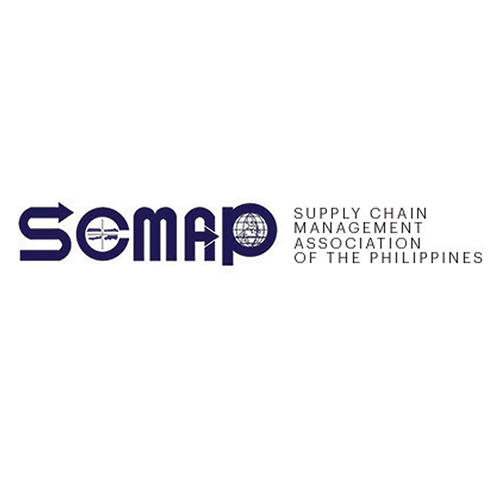A recent string of maritime disasters – the sinking of the MT Princess Empress last February, which led to an oil spill affecting Oriental Mindoro; and the capsizing of the MB Aya Express in the Laguna Lake last month, which killed 27 people – has brought back calls for the establishment of a new government body responsible for transportation safety.
This isn’t new. These proposals go back many years. The earliest appearance that I personally remember is in the National Logistics Master Plan, which was first unveiled in 2016, and has since served as a backbone for many government initiatives impacting the supply chain sector today. I’m sure it’s been mooted before that. Senator Grace Poe has been advocating for this in recent years, and various business groups have expressed their support. And in fact, the law creating the Philippine Transportation Safety Board was approved by Congress, only to be vetoed by President Marcos, citing his belief that the proposed agency will duplicate functions held by other bodies such as the Department of Transportation and law-enforcement agencies such as the National Bureau of Investigation.
While I understand the president’s decision when viewed through the lens of a streamlined and efficient government, I do think we should establish a transportation safety body. We must understand that its duties – and, therefore, its value – would go beyond investigating accidents involving transportation.
An obvious model is the National Transportation Safety Board, set up by the United States in 1967. The NTSB’s predecessors were established decades prior, in response to concerns that the then Civil Aviation Administration was, in effect, investigating itself when looking into airplane crashes at the time, preventing it from making certain recommendations. In its early years, the NTSB was administratively under the US Department of Transportation, until a law in 1974 fully guaranteed its independence. It has since investigated over 140,000 incidents on air, land and sea, both within the United States and outside it – especially if involved vehicles are made by American companies.
I believe the NTSB’s value lies beyond understanding the causes of transportation accidents. It’s in the formal safety recommendations it makes to relevant agencies, to make sure similar accidents do not happen in the future. Its recommendations have led to improvements in airline and maritime safety, as well as to laws governing driver’s and vehicle construction. Outside of its accident reports, the agency regularly issues a “most wanted” list highlighting urgent recommendations. The agency also does research into emerging transportation safety issues: recent reports cover topics like electric scooter accidents, fires in electric vehicles, and drug use among drivers.
Our neighboring countries also have similar investigative bodies. Indonesia’s National Transportation Safety Committee, for instance, was established in 1999 and made fully independent in 2012, and is also tasked with investigating accidents and making recommendations. Considering the country’s similar archipelagic nature and transportation landscape, we can look to them for examples on how to proceed with our own journey.
Establishing our own transportation safety body is key as the Philippines accelerates its investment in infrastructure and expands its public transportation network, not just in urban areas but across the country. For instance, our Department of Transportation recently unveiled a 30-year rail master plan covering Luzon which, they say, would usher in a “rail renaissance”. Great, of course – but I imagine this revival will run out of steam if our trains are often derailed (hopefully not literally) by safety concerns due to infrastructure or personnel shortcomings. Come to think of it, our maritime transport system needs an overhaul. Cost may be a key reason why inter-island transport, especially in rural areas, is still heavily reliant on motorized wooden bancas or aging boats – and I hope recommendations from the proposed PTSB would nudge this sector forward and prevent incidents like what happened to the MB Aya Express.
And this body will also have an impact on the movement of cargo. Better safety regulations – coming from a place of expertise, rather than from agencies trying to watch their back and reduce its exposure to responsibility – would mean better working conditions, lower logistics costs and higher service levels. That means satisfied shippers, and satisfied end customers.
We should reconsider proposals to establish a transportation safety agency, and put those in the forefront as we endeavor to revolutionize our transport networks. The president’s fears of an overlap with other agencies can be easily addressed: the PTSB can focus squarely on safety recommendations, leaving questions of “whose fault is it?” with other agencies. And besides, there are many examples of existing overlaps that the government should address if it wants better service delivery from its agencies. The National Logistics Master Plan also recommends, for example, the removal of commercial functions from agencies like the Philippine Ports Authority and the Civil Aviation Authority of the Philippines. Whatever happened to that?
LogiSYM Philippines 2023: After events in Singapore and Malaysia, LogiSYM is holding its first ever event in the Philippines on Thursday, August 17, at the World Trade Center. SCMAP is among the supporting organizations of this event – and I am honored to be moderating a panel on developing resilient digital workforces. I look forward to seeing you there – visit logisym.org/philippines2023 for more details and to register.
Henrik Batallones is the marketing and communications director of SCMAP, and editor-in-chief of its official publication, Supply Chain Philippines. More information about SCMAP is available at scmap.org.
PREVIOUS COLUMN: Solutions that Stand the Test of Time





